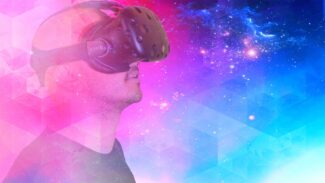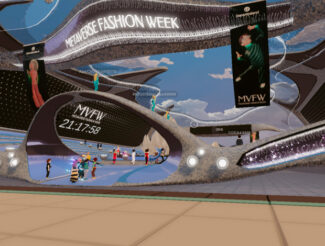Zebra Technologies aboga por crear un ‘gemelo digital’ en el metaverso del retail
 Un gemelo digital es el primer paso, según Zebra Technologies, que permitirá al entorno retail comprobar qué efecto producen multitud de variables: desde cómo influye el color de la tienda a qué aspecto tendrá un producto según dónde se ubique.
Un gemelo digital es el primer paso, según Zebra Technologies, que permitirá al entorno retail comprobar qué efecto producen multitud de variables: desde cómo influye el color de la tienda a qué aspecto tendrá un producto según dónde se ubique.
Como señalan desde Zebra Technologies, el metaverso se está convirtiendo en una opción más en la estrategia omnicanal del sector retail, pero su integración tiene que hacerse de forma progresiva e inteligente, apostando primero por un modelo de ‘gemelo digital’.
Currently, algunas tiendas del entorno de la moda están creando espacios virtuales donde los clientes pueden disfrutar de experiencias inmersivas y vestir a sus avatares antes de comprar algún producto. Prueba de ello es la reciente celebración de la primera Semana de la moda en el metaverso, durante la cual las marcas han mostrado sus últimas creaciones y tendencias.
 Esto mismo también está sucediendo en el entorno comercial de automóviles (More details at Digital AV), en tiendas de alimentación, servicios, among others.
Esto mismo también está sucediendo en el entorno comercial de automóviles (More details at Digital AV), en tiendas de alimentación, servicios, among others.
“Son muchas las empresas que están empezando a trabajar con la idea del metaverso”, Says Biswa Sengupta, technical and global head of machine learning en Zebra, quien se plantea: “¿esta opción será atractiva para los consumidores? ¿Y si la estrategia de ‘constrúyelo y el cliente vendrá en masa’ no funciona? La clave es hacerlo de forma progresiva, ajustando el binomio producto-mercado antes de abrir tiendas virtuales”.
Para esta experta, “el metaverso puede considerarse también como un campo de experimentación virtual perfecto. Un gemelo digital en el que podamos crear, entrenar y desplegar las más innovadoras tecnologías de aprendizaje automático, desde visión por ordenador (CV), a procesamiento del lenguaje natural (NLP) o aprendizaje por refuerzo (RL), para desarrollar nuevas experiencias de consumo”.
El primer paso para ello, según Zebra, debe ser construir un gemelo digital, I mean, una especie de metaverso simplificado; un entorno que permita tener visibilidad de todos los activos (products, empleados, cadena de distribución, etc.) y recopilar información.
En este entono es posible utilizar tecnologías de visión por ordenador, como las SmartLens Gen II de Zebra, para medir la oferta y la demanda en tiempo real en la tienda, analizar qué tareas son más prioritarias o tomar decisiones sobre desarrollos futuros.
At the same time, si el gemelo digital se construye con rigor, “será posible crear mundos sintéticos y diversos subconjuntos para comprobar qué efecto provocan multitud de variables: desde qué pasa si la tienda está pintada de rojo en lugar de blanco, a cientos de permutaciones de productos”, subrayan desde Zebra.
In this sense, sostienen que “una adopción inteligente y progresiva puede llevar a las empresas a evolucionar desde las experiencias virtuales actuales, hasta los modelos de gemelo digital y el metaverso, reduciendo el riesgo de desajustes entre el producto y las necesidades del mercado”.
You liked this article?
Subscribe to our Feed And you won't miss a thing.














